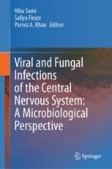Search
Search Results
-
Intrinsic Factors Associated with Dietary Toxin Quantity and Concentration in the Nuchal Glands of a Natricine Snake Rhabdophis Tigrinus
The snake Rhabdophis tigrinus sequesters cardiotonic steroids, bufadienolides (BDs), from ingested toads and stores them in the nuchal glands as...

-
Scanning electron microscopic investigation of general morphology and ciliary structures in Nereilinum murmanicum Ivanov, 1961 (Annelida, Siboglinidae)
The general morphology of the body, including the distribution of putative sensory ciliary cells, was studied using scanning electron microscopy...

-
Development and structure of the anterior nervous system and sense organs in the holopelagic annelid Tomopteris spp. (Phyllodocida, Errantia)
Tomopteridae are transparent, predatory Annelida inhabiting pelagic ocean zones. Despite being well-known for their fast metachronal swimming and...

-
Two new pygmy squids, Idiosepius kijimuna n. sp. and Kodama jujutsu n. gen., n. sp. (Cephalopoda: Idiosepiidae) from the Ryukyu Islands, Japan
Two new pygmy squid from the Ryukyu archipelago, Japan, are described: Kodama jujutsu , n. gen., n. sp. and Idiosepius kijimuna , n. sp. They differ...

-
New Insights Into Dietary Toxin Metabolism: Diversity in the Ability of the Natricine Snake Rhabdophis tigrinus to Convert Toad-Derived Bufadienolides
The Japanese natricine snake Rhabdophis tigrinus sequesters cardiotonic steroids, bufadienolides (BDs), from ingested toads in the nuchal glands as...

-
Sensory cells and the organization of the peripheral nervous system of the siboglinid Oligobrachia haakonmosbiensis Smirnov, 2000
BackgroundThe nervous system of siboglinids has been studied mainly in Osedax and some Vestimentifera, while data in Frenulata – one of the four...

-
DO Toxic Invasive Prey Become a Toxin Source for Native Consumers?
Toxic organisms can become food that potentially harms consumers. When these organisms become invasive species, the harm often turns to a serious...

-
Holopelagic Annelida from the Atlantic sector of the Southern Ocean and adjacent South Atlantic with descriptions of three new species
Pelagic polychaetes were collected in the Bransfield Strait, the Weddell Sea, and near the South Orkney Islands area in the austral summer of 2022...

-
Rabies Encephalitis: A Disease Characterized By Complex Neuropathogenic Pathways and Diagnostic Difficulties
Rabies virus belongs to family Rhabdoviridae and Genus Lyssavirus. It is a lethal disease spread by animal bites that carry the virus in their...
-
Not that many leech species after all: Myzobdella lugubris and Myzobdella patzcuarensis (Annelida: Hirudinida) are the same species
The genus Myzobdella groups five species of leeches parasites of fishes mainly of freshwater but with tolerance to brackish waters. Native...

-
Within-family plasticity of nervous system architecture in Syllidae (Annelida, Errantia)
BackgroundThe ground pattern underlying the nervous system of the last common ancestor in annelids was long thought to be settled, consisting of a...

-
A new symbiotic relationship between a polyclad flatworm and a mantis shrimp: description of a new species of Emprosthopharynx (Polycladida: Acotylea) associated with Lysiosquilla maculata (Crustacea: Stomatopoda)
We describe a new species of polyclad, Emprosthopharynx lysiosquillae sp. nov., based on specimens collected from the body surface of the mantis...

-
Establishment of primary prostate epithelial and tumorigenic cell lines using a non-viral immortalization approach
BackgroundResearch on prostate cancer is mostly performed using cell lines derived from metastatic disease, not reflecting stages of tumor initiation...

-
Common Genet Genetta genetta (Linnaeus, 1758)
This comprehensive species-specific chapter covers all aspects of the mammalian biology, including paleontology, physiology, genetics, reproduction...
-
Reeves’ Muntjac Muntiacus reevesi (Ogilby, 1839)
This comprehensive species-specific chapter covers all aspects of the mammalian biology, including paleontology, physiology, genetics, reproduction...
-
Reeves’ Muntjac Muntiacus reevesi (Ogilby, 1839)
This comprehensive species-specific chapter covers all aspects of the mammalian biology, including paleontology, physiology, genetics, reproduction...
-
Skin structure, coloration, and habitat utilization in typical and melanistic morphs of the grass snake (Natrix natrix)
Melanism is a polymorphic phenotype caused by the number and density of melanocyte cells producing melanin pigment in the skin and widely observed in...

-
Hypnotic Effects of Melatonergic Compounds Measured in Mice or Rats
Melatonin is a pleiotropic compound mostly acting through its two G protein-coupled receptors named MT1 and MT2 and known for its role in regulating...
-
Cape Hare Lepus capensis Linnaeus, 1758
This comprehensive species-specific chapter covers all aspects of the mammalian biology, including paleontology, physiology, genetics, reproduction...
-
Ermine Mustela erminea Linnaeus, 1758
This comprehensive species-specific chapter covers all aspects of the mammalian biology, including paleontology, physiology, genetics, reproduction...
